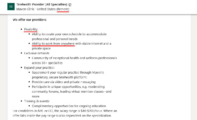Global investors have always been drawn to Southeast Asia’s growth story, as one of the world’s fastest developing economies and home to a relatively youthful population of 600 million.
This year’s Asean Summit chair, Indonesia, pitched that the region would continue its role as an epicentre for expansion. Even amid the backdrop of a challenging external environment – from the Russia-Ukraine war, to rising inflation and interest rate escalation – there is still substance behind the Southeast Asian story.
East Ventures, a venture capital (VC) firm based in the region, raised a total of $835 million in the past year across various strategies, achieving in May the first and final close of its debut Growth Plus fund, at $250 million. The vehicle aims to support innovators within the company’s ecosystem of portfolio companies that demonstrate strong potential.
“The successful fundraise shows that with the right strategy, management team and mandate, capital is still available,” Roderick Purwana, managing partner at East Ventures, told FinanceAsia.
The East Ventures team is experiencing promising traction across its portfolio – 60% of its growth-stage start-ups have delivered a positive earnings before interest, taxes, depreciation and amortisation (Ebitda) or are in the process of doing so; and more than 40% have a secured a cash runway beyond 2025. At the end of May, the company had invested in more than 20 start-ups so far this year, across sectors ranging from waste management and mental health, to digital mortgages.
In total, the firm has $1.5 billion in assets under management (AUM) across 12 funds that are active across Japan and Southeast Asia. In the latter, it has invested in over 300 companies and was an early backer of Indonesian start-ups, Traveloka and Tokopedia, which merged with GoJek, in 2021.
The firm sees particular opportunity in Indonesia and is among the most active in the market, even though Purwana admits that pace of activity has slowed due to market sentiment.
Money continues to flow into Southeast Asia, as evidenced by the accumulation of $10.4 billion in the region’s start-up ecosystem, in 2022. According to Cento Ventures’ recent Tech Investment report, last year marked the strongest performance of the market for three years on record. In spite of a global slowdown, it finished up on par with pre-pandemic investment levels.
“Southeast Asia will face or is already facing a correction, but the ramifications of this are not as profound as those being experienced by other emerging regions like Latin America and India,” Dmitry Levit, partner at Cento Ventures, told FA from Singapore.
“It remains to be seen whether this contraction is justified by the return to a pre-2022 baseline, or overdone, as a result of investor panic; but as a firm, we take the view that when valuations are low enough, we should invest in such a market.”
Financing the future
Levit and his VC peers remain focussed on digital financial services. It is the fintech sector that they view as key for Southeast Asia, having accounted for 46% of overall liquidity in 2022, according to the firm’s report.
The Cento Ventures team has capitalised on this opportunity through recent investment in Indonesia’s Finfra, which provides embedded finance solutions; and Philippine cross-border payments start-up, Aqwire.
In May, Singapore-based fintech start-up, Jenfi, secured one of the highest fundraising milestones across the region to date, raising $6.6 million in a pre-series B round led by Japan-headquartered Headline Asia. The round also saw participation from existing investors, such as Monk’s Hill Ventures.
“The opportunity in Southeast Asia – especially across traditional working capital and SME loans – is huge. Banks tend to deprioritise this segment as it is riskier, so participation opens up to technology companies like Jenfi, to act as alternative lenders and to offer something that is differentiated but also commercially viable,” said Susli Lie, partner at Monk’s Hill Ventures. She is also the co-founder of ErudiFi, a tech-enabled education financing company.
Jenfi co-founder and CEO, Jeffrey Liu, attributes the firm’s recent successful fundraise to experience. With a background in finance, he founded GuavaPass in 2015, before setting up Jenfi in 2019, alongside Justin Louie. His endeavours in the start-up segment have seen him replicate the process every one to two years.
“I always thought it was a numbers game, but as I’ve built track-record, I’ve realised that it’s more important to focus on quality conversations and connections,” Liu said.
“From start to finish, Jenfi’s pre-Series B capital raise took six months. We had a shortlist of funds that we wanted to talk to from day one, and the fact that investors were already aware of us supported entry into real deal conversations,” he added.
To date, Liu’s firm has raised $40.2 million, which includes $15.2 million in equity, but he thinks it is unlikely that the Jenfi team will fundraise again, before 2024. While he shared that the firm had managed to shield from some of the market challenges during this recent round, unfortunately, this is not the case for the majority of other start-up peers.
Jenfi’s business enables digital native companies – including e-commerce or software-as-a-service (Saas) firms – to scale their ambitions by funding their growth and marketing expansion plans. So far, they have deployed $30 million across 600-plus companies.
“We’ve noticed in the last six months that the VC-backed companies we aim to support are in more challenging positions, in the sense that they have less of a cash runway. We’re hearing that it’s a lot harder for them to secure capital and that there are delays in their overall fundraising processes,” he explained.
Going for growth or pursuing profitability?
This perspective is shared by Lie, whose Southeast Asian VC firm has invested in early-stage technology companies since its foundation in 2014. Reports indicate that Monk’s Hill Ventures has raised at least $380 million across three funds and it has invested in over 40 fast-growing technology companies in Southeast Asia, including Singapore logistics company, NinjaVan; and Indonesian rural e-commerce start-up, Dagangan.
“In this market environment, we see that later-stage deals are taking longer to complete, which means that there is even more of an imperative to ensure as long a cash runway as possible,” she shared.
Before the current cycle, Lie saw deals close in as little as a couple of weeks to a month, but she cautions that this is not the norm. In this environment, she believes that start-ups need cash on balance sheet to support funding for at least 12-months of activity.
“Where our portfolio companies are concerned, the collapse of Silicon Valley Bank (SVB) made indirect impact by way of sentiment. The bank had always been a pioneer in terms of its product offerings and for its activity to be curtailed without anyone else stepping in to take on the whole business, this will alter the flow of capital throughout the entire ecosystem,” said Lie.
“There are fewer investors that are actively deploying compared to the past. For those that are, they want to take a bit more time to conduct due diligence and get to know prospective investments better. Fewer months of runway translates to weaker negotiation power,” she added.
A clear path to profitability is also imperative in this part of a cycle. With it, access to capital remains open; without it, Cento Ventures’ Levit believes that start-ups are exposed to very steep valuation discounts.
Southeast Asia’s top tech companies, Grab and GoTo, which listed in 2021 and 2022 respectively, have yet to show investors that they can stem the red ink. However, this factor is not unique to the region.
“This isn’t a Southeast Asia-specific problem; we see it happening globally, as well. For high-growth tech companies, the path to profitability is a long one,” said Niklas Amundsson, partner at the Hong Kong office of placement agent, Monument Group.
Levit’s perspective indicates that by going for growth, a start-up downplays its push for profitability. However, Purwana believes that both elements are of equal importance and can progress in tandem.
“Sometimes, people think that it’s a question of deciding on growth or profitability, but it shouldn’t be either-or. Ultimately, any company must work to ensure profitability – whether one year, five years or 10 years into existence. They have to be able to turn a profit eventually,” he shared.
Curiosity and caution
As investors seek exposure to start-ups that can sustain growth momentum and pursue profitability, they are keeping an eye on developments in the generative artificial intelligence (AI) space.
KPMG’s 1Q23 Venture Pulse report highlighted investor interest in AI as being relatively robust in Asia. In particular, the sector drew attention during the first quarter of 2023 on the back of the global buzz generated by ChatGPT.
“AI start-ups that can demonstrate potential at industrial scale or in terms of commercial application and adoption – especially in the areas of advanced manufacturing, transportation, energy management, health tech and process optimisation and productivity – will attract investment dollars,” said Irene Chu, partner and head of the New Economy and Life Sciences division at the Hong Kong base of KPMG China.
She underlined that in light of the current tech talent shortage across Asia, the use of AI to improve productivity is more relevant and encouraged, than ever. But with curiosity, comes caution.
“We are excited about the prospect of generative AI as a transformative technology, but we are also cautious around its capabilities and potential negative ramifications,” said Purwana.
East Ventures has been active in the AI space since August last year, when it invested in the seed round of Bahasa.ai, which aspires to build a natural language processing and understanding engine for the Indonesian language. Since ChatGPT has come onto the scene, it has not completed any new investments in the generative AI space, but the segment is one that remains closely watched.
Levit views the space as the “next wave” – an area of tech that every company will need to consider moving forwards: “I have a feeling we will have to fight long and hard against the false dichotomy around AI-based versus non-AI-based businesses, similar to what we first saw with mobile phones; the offline to online transition; and B2B and B2C. The narrative will be stronger than substance in the short-term, but substance will be stronger than narrative in the long-run.”
To unlock its full potential, the region’s tech industry will need to find a new route to innovation, Purwana suggested.
While some view Southeast Asia as a pioneer in the tech space, he feels that “Southeast Asia will have to grow beyond being a ‘copycat market’ for tech, which is a significant gap to address”.
However, he shared that it is reassuring to look at China.
“In the early days of its developing tech sector, China turned to the US for inspiration and duplication. But today, this is no longer the case, especially in fintech sector. In this arena, China is probably more advanced than the US,” Purwana added.
Perhaps one of the best illustrations of this point, is China’s success in leapfrogging the use of credit and debit cards to drive a digital payments revolution, via digital wallets and QR codes. Alibaba (through Alipay) and Tencent (through WeChat Pay) are two of the first-movers to gain status in one of the world’s largest and truly digital economies.
Hong Kong’s offer of the missing puzzle piece
The prospects for Southeast Asia’s start-up scene remain bullish. However, the money being deployed into VC funds largely comes from high-net-worth individuals (HNWIs) and family offices. Asia’s deepest pockets – the institutional investor community – have yet to dip their toes in the start-up scene in a meaningful way, Amundsson noted.
For him, the vital, missing component is: the exit. Many of the region’s top tech companies prefer a US versus domestic listing, as the region lacks an obvious, successful IPO route for up-and-coming technology companies. However, Amundsson does see some opportunity in Hong Kong, which he considers to be further ahead of its Southeast Asian peers in this regard, and continues to advance the development of an attractive and liquid capital market.
On March 31st, new listing rules for specialist technology companies came into play in the special administrative region (SAR). The Chapter 18C regime extends to start-ups active in new economy industries such as AI, alternative energy and agritech. While this is set to attract more listings from outside the China region, analysts expect this only to materialise in the next three to five years.
“I am excited about the new 18C regime launched in Hong Kong because it covers sectors that are going to be transformative, with the potential to solve some of the most challenging problems we face, around climate change, food security and clean energy. Despite the slowdown in IPO activity globally, the new regime offers an attractive platform for those innovative Southeast Asian start-ups that aspire to solve these global issues,” Chu said.
However, while the market capitalisation threshold remains high, it might be some time before these companies list. It also remains to be seen whether Hong Kong’s bourse provides a realistic and viable route for Southeast Asia’s start-up community.
As Asean focusses on finding its next epicentre of growth, the region’s technology sector offers perhaps the greatest opportunity for investors, as it continues to navigate short-term challenges like the collapse of SVB and works to address concerns around the development of next-generation AI.
Reviewing the region’s potential, Lie concluded, “Most of emerging Southeast Asia is moving away from manufacturing towards the service industries, and this is where we’re going to see the adoption of technology that really drives growt
¬ Haymarket Media Limited. All rights reserved.








































